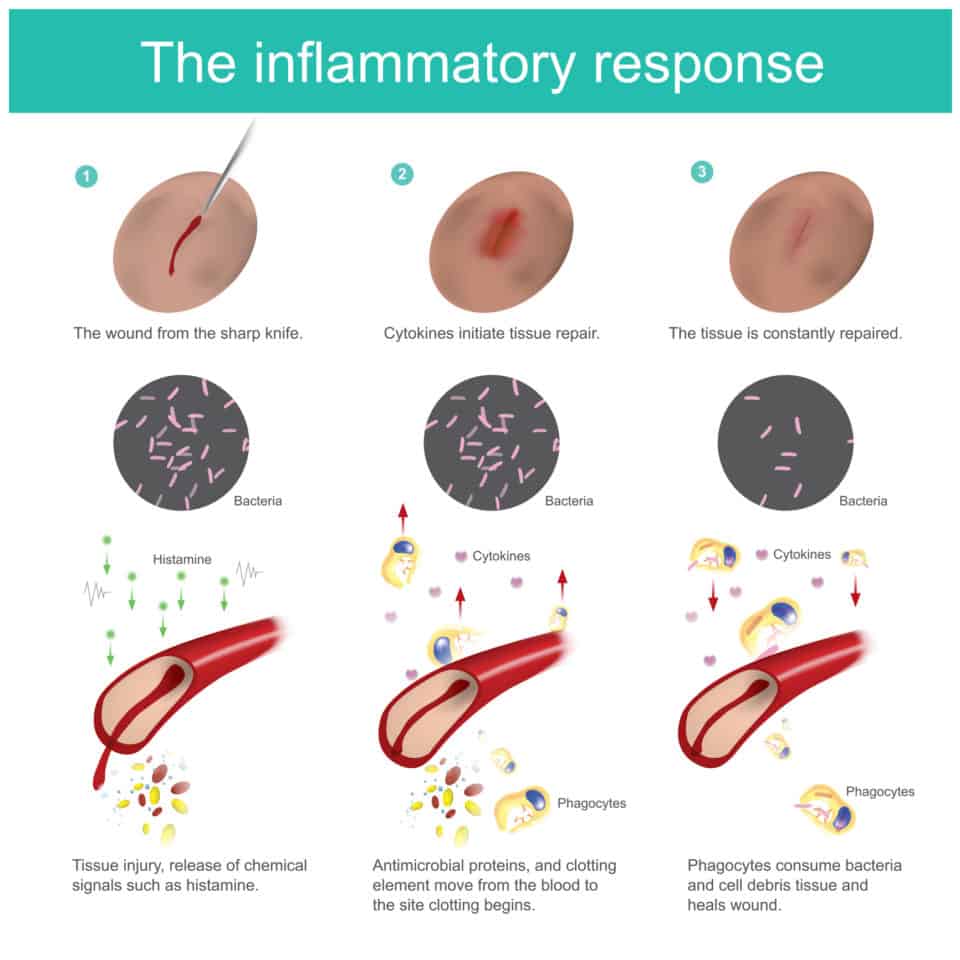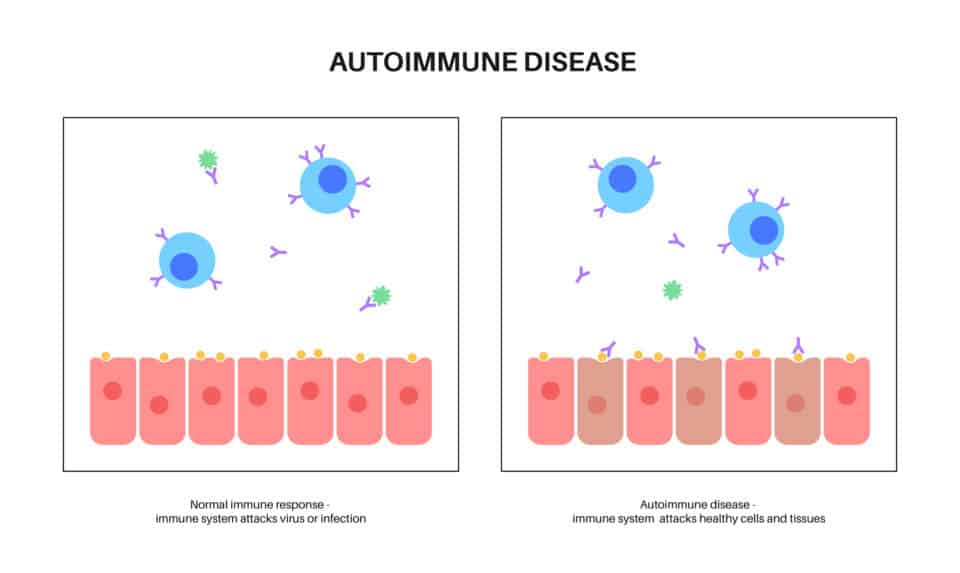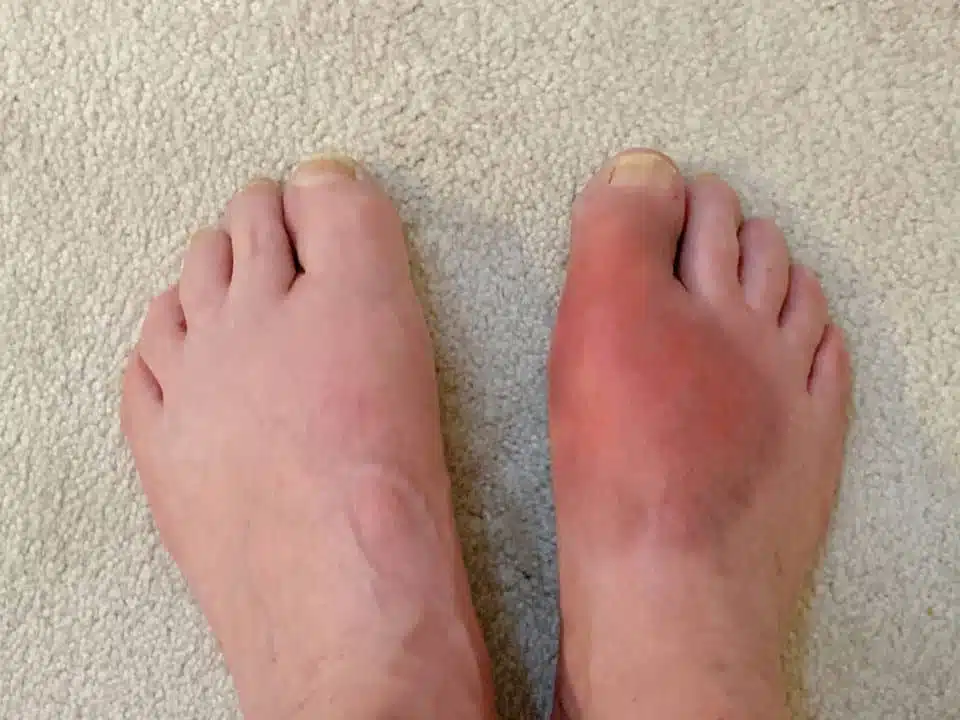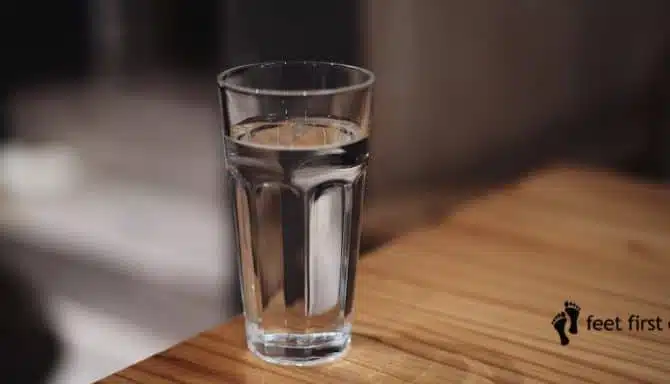Redness, swelling, discomfort, hot upon touch. These are all symptoms of inflammation. Inflammation is triggered by the body’s inflammatory response. It’s the medical term for your body’s process of fighting against harmful substances. Thanks to our body’s inflammatory response, we’re able to fight off illness, regenerate muscle and tissue, and trap bacteria while our immune system fends for itself.
Everything good comes in moderation though, right? In some cases, your body’s inflammatory response is too much and, if it continues for a prolonged period, can cause a number of foot conditions. In this article, you’ll learn more about the various kinds (the good and the not-so-good) of inflammation, signs of the inflammatory response, and the two primary categories of inflammation.
What is inflammation?
Inflammation occurs when your body’s white blood cells release chemicals into your bloodstream. It does this to fight disease, damage, or harmful substances. As the blood flow to the area increases, you experience warmth, redness, and swelling. In many ways, inflammation is a good thing. It helps fight things that can harm your body. It also helps repair damage to your tissues and muscles, which is often why after an acute injury, you’ll have localized swelling. But too much inflammation or prolonged inflammation can do more harm than good.
What is the inflammatory response?
Think of the inflammatory response as your body’s firefighters. This defense mechanism is your body’s response to invaders that it deems harmful. It activates disease-fighting and muscle-generating cells and chemicals and dispatches them to the affected area.
There are five components of the inflammatory response:
- Heat
- Pain
- Redness
- Swelling
- Loss of function
What’s “good” about inflammation?
Inflammation is a powerful reaction that can fight infection, heal injuries, and regenerate tissue, among other benefits.
How does inflammation help heal an injury?
Inflammation helps heal an injury by encouraging increased blood flow with the nutrients needed for your body to repair itself. These are immune cells. They include neutrophils and monocytes, antibodies, protein, and other fluids. The increased blood supply and fluids also causes swelling. Once the job is done, the inflammation subsides as your body relays signals that the healing process is complete.
Inflammation can also be purposely induced. For example, shockwave therapy uses high-intensity sound waves to purposely trigger the inflammatory response to treat chronic injuries like plantar fasciitis, Achilles tendinopathy, and patellar tendinopathy. Contact us today if you’d like more information about shockwave therapy and where you can get this treatment in Toronto.
How does inflammation fight infection?
Like with an injury, your immune system responds to infection by sending out inflammatory cells and cytokines to fight the bacteria. The goal here is to trap the area from additional bacteria and neutralize the site while the healing process occurs. Again, this is why you see swelling, and redness, while also experiencing some pain and discomfort.
What’s “bad” about inflammation?
Sometimes, inflammation doesn’t turn off when it should. Prolonged bouts of inflammation can be a “bad” kind of inflammation, and lead to many chronic conditions. This type of unintended inflammation occurs when your body thinks it’s fighting invaders when in fact it’s not needed. For instance, with arthritis, your body’s defense system – your immune system — triggers inflammation when there are no invaders.
Harvard Health Publishing writes, “intermittent bouts of inflammation directed at truly threatening invaders protect your health.” But, inversely, research shows that too much of a good thing can be bad. One such study concludes that “chronic, low-grade inflammation is a key factor in the pathogenesis of the cardiovascular disease, and is associated with the risk of developing diabetes, dementia, and depression.”
Excessive inflammation buildup also damages joints, muscles and ligaments. Too much inflammation (i.e.: chronic inflammation) is linked to various foot diseases and conditions, such as rheumatoid arthritis, gout and psoriatic arthritis. Excessive inflammation buildup can also occur with persistent and chronic Achilles tendonitis and plantar fasciitis.
Chronic or acute inflammation? Which is it?
Primarily, there are two types of the inflammatory response: acute inflammation and chronic inflammation.
Acute inflammation
Acute inflammation is your body’s immediate inflammatory response. It can last hours to days for minor injuries, and up to 3 months for more severe injuries (i.e.: a broken bone). Acute inflammation is temporary, only lasts for the time required for the injury to heal, and then goes away once the injury is healed. During acute inflammation, plasma and leukocytes travel via the blood supply to the damaged/infected area. Acute inflammation occurs when you stub your toe, sprain your ankle, have an infected ingrown toenail, or break a bone.
Chronic inflammation
Chronic inflammation is just that: chronic. This prolonged inflammation can last months, if not years. It can occur when the inflammatory response is delayed, halted, or incomplete after an acute injury. It can also occur when the inflammatory response continues even after an injury heals, or is unnecessarily triggered due to an auto-immune disease (i.e.: rheumatoid arthritis or lupus). Chronic inflammation involves a physiological shift of the body’s cells at the site of inflammation. Prolonged inflammation can be destructive to your joints and muscle as it both attempts to heal the area, but simultaneously does the opposite.
















